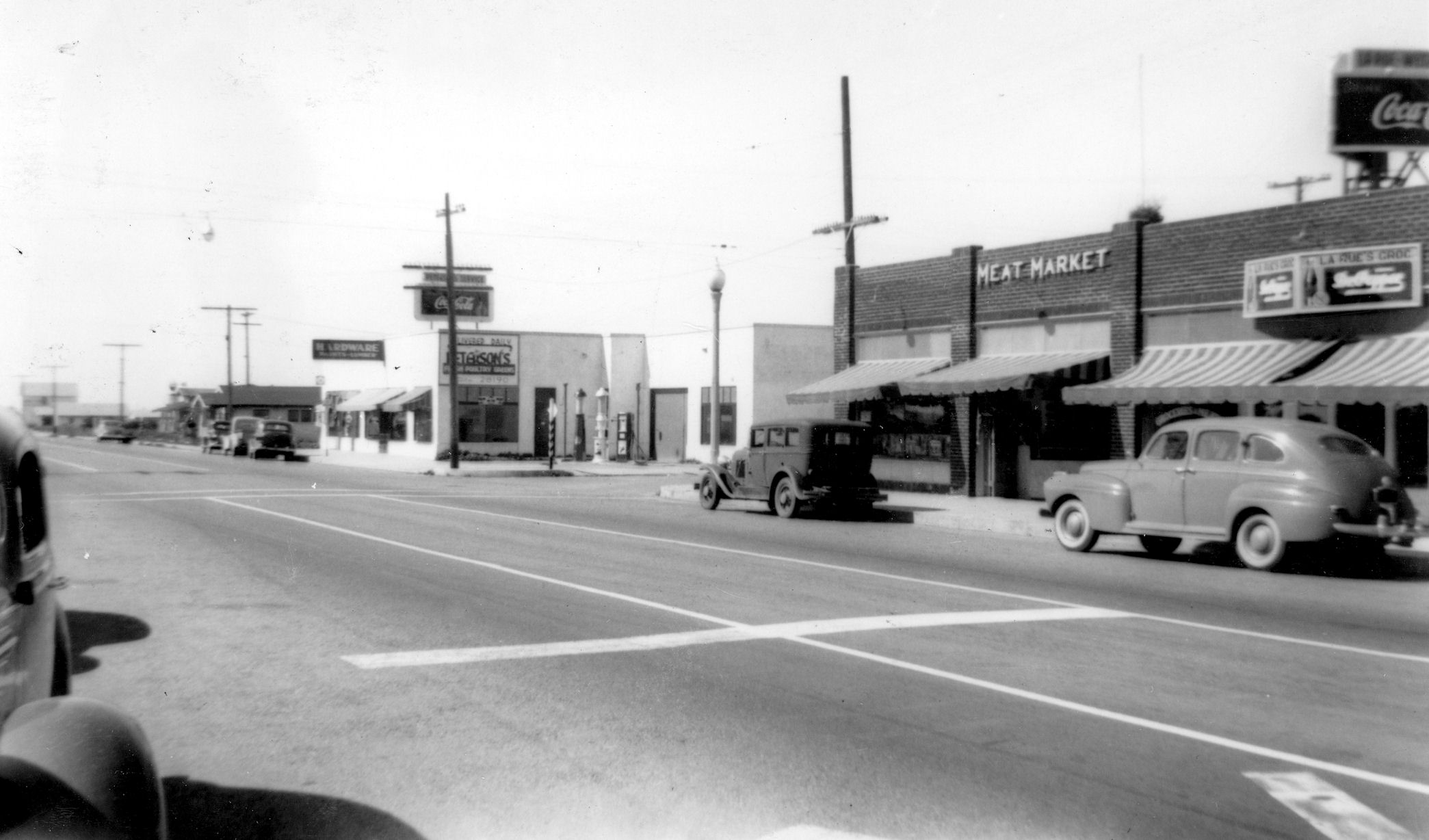Downtown Cypress, 1941 (Courtesy the Orange County Archives).
A Little About Cypress
The community of Cypress began to take shape in the 1890s, as more and more settlers moved into the area on the western edge of Orange County. By 1896 there were enough families to support a school district. Just who selected the name Cypress is unclear, but cypress trees were popular then, both as ornamental trees and windbreaks. They grow well in the climate here and are green all year-round (in fact the pioneers used to use the green cypress boughs as Christmas decorations before we began shipping in Christmas trees from hundreds of miles away). The original Cypress School was near the corner of Ball Road and Moody Street.
The area was also sometimes known as Waterville, for all the artesian wells in the area, but when the Pacific Electric trolley line came through in 1905 they adopted the Cypress name for the station. S.O. Walker (a big local landowner and a major political player of the day) laid out an adjoining townsite that same year, but Cypress really didn’t being to grow until the 1920s, as Orange County began building a modern highway system – in this case, extending Lincoln Avenue west towards Long Beach. In 1923, Cypress got a new schoolhouse and a newspaper. In 1927, the town got a post office and its first bank, at the corner of Lincoln and Walker, in the heart of downtown. But still, Cypress remained a pretty rural place on into the 1950s.
Like a number of areas in western Orange County, quite a few dairy farmers began moving down to Cypress from Los Angeles County in the 1940s, as they were pushed out by new subdivisions. Cypress encouraged the dairy farmers to settle there, and by 1954, nearly half of the county’s 165 dairies were located in and around Cypress.
Unfortunately, it wasn’t long before the local dairies started getting squeezed out down here as well, as Orange County began to grow. In 1955, the dairymen to the north incorporated as the City of Dairyland – now known as La Palma – in order to protect the local ranches. Around that time, it was proposed to incorporate all the area around Cypress, Los Alamitos, and Stanton into one big city. That idea never got very far, so in 1955 the local farmers went to the board of supervisors asking to form Dairy City. An incorporation election was held on June 26, 1956 and passed easily – 217 to 73. There was a tie in the race for city council, however, with Jacob Van Leeuwen and Martin Olsthoorn both polling 134 votes apiece, so the board of supervisors brought them in and flipped a coin to decide the winner (Van Leeuwen got the job).
At the same election, voters were asked in a straw poll what they thought should be the name of the new city. The Dairy City had been used all through the push for incorporation, but with Dairyland nearby, and Dairy Valley (today’s Cerritos) just over the line in Los Angeles County, some felt it might get a little confusing. They gave the voters four choices – Dairy City, Los Coyotes (after the old Mexican rancho), Lincoln City (after the street), or Cypress – and far and away the people chose Cypress.
(Second, by the way, was Lincoln City; only eight people voted for Dairy City.)
Now the curious thing is, Dairy City didn’t originally include the old town of Cypress. Dairy City was actually south and west of Cypress, and didn’t include the business district at Lincoln and Walker, or the residential neighborhoods to the north. In 1957, another election was held to officially rename Dairy City the City of Cypress, and about that same time the old downtown was annexed into the city (though it had lost a lot of its business buildings a couple of years before with the widening of Lincoln Avenue). Not long after, the city also annexed most of the adjoining residential neighborhoods.
Where Dairyland held out for a decade against the subdividers, Cypress only waited four years before changing its zoning to allow new residential tracts in the city. Not everyone was happy about the change. From a start of about 1,600 residents, Cypress has grown to a city of nearly 50,000. But the cows are long gone.
